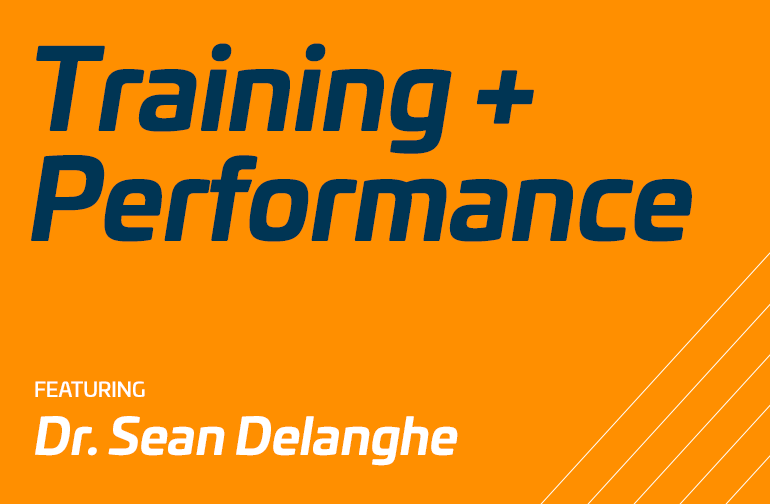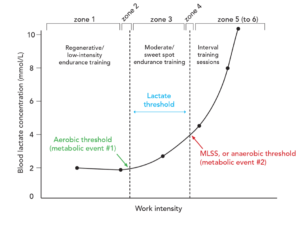 Welcome back to my series on strength training and endurance sports. My last article looked at strength work and cycling economy- which was way back in June. I have a good excuse though: the birth of my daughter, Adeline Delanghe!
Welcome back to my series on strength training and endurance sports. My last article looked at strength work and cycling economy- which was way back in June. I have a good excuse though: the birth of my daughter, Adeline Delanghe!
I would like to say “now that her sleep is normalizing blah blah,” but that simply is not the case. Instead, I’m just getting better at squeezing stuff in, which hopefully will result in more science of training articles for you all!
In any case, if you haven’t already, please review the first three articles in this series. The idea is not to give you a cookie-cutter, magical answer on how endurance athletes should utilize strength training. Instead, this is meant to introduce you to some of the nuances in the science, and how to decide if, when, and how much resistance training you should do.
Strength training 101: Impact on V02Max
Strength training 102: Impact on Running economy
Strength training 103: The impact of cycling economy
To add to the above, today’s article will take a look at another parameter of endurance performance- lactate threshold.
Strength Training and your Lactate Threshold (LT)
What is your LT? This is essentially the exercise intensity at which lactate accumulates in the blood faster than it can be removed. This is the “breaking point” so to speak between low and high-intensity work.

While V02max is important, having a high lactate threshold is crucial in endurance performance. The higher the lactate threshold is as a % of your V02max, the harder the effort you will be able to sustain for long periods of time. We don’t race at our V02max, but we do spend lots of time in and around our lactate threshold!
While V02max is a popular thing to measure and be proud of, as we have noted before, somebody with the highest V02max doesn’t always win the race, especially in running. As we discussed, this is in large part due to exercise economy. However, this is also seen when somebody has more effectively trained their lactate threshold despite not having the same max oxygen-consuming ability. In other words, having a slightly lower V02max that’s good enough, and a very highly trained LT can allow you to beat a competitor with a higher V02max.
V02max is the ceiling, and we want to max it out, and then get our LT as close to it as possible to be at our best!
Does strength training improve ones’ lactate threshold?
In our previous article, we showed that while V02max may not improve with resistance training, exercise economy (in the right way, for the right athletes) does.
Lactate threshold can be improved by several things. Interval running and tempo runs trigger an accumulation of lactate, which in turn can trigger adaptations at the muscle and cellular level which make us less likely to accumulate lactate, and better equipped to get rid of it.
Another way we become less likely to accumulate lactate is if we become more economical at a given effort. It’s not about muscle cells accumulating more things (like mitochondria) that make us better at handling lactate. Instead, it’s about establishing new ways to get free energy, such as developing an Achilles tendon that is more springy.
As we established in my previous articles on running and cycling economy, strength work spikes them both in the right setting. So, if economy improves, you should be faster at your lactate threshold, right? Once again, there’s nuance.
The Science:
There are many studies out there that show adding resistance training doesn’t work to boost LT, such as here and here.
Then there are some that show it has a minimal positive effect, such as here, while there are still others that show it has a major effect such as here.
Without getting into the weeds of these articles, general conclusions can be drawn that parallel what we saw with my first two articles. Resistance training won’t help stuff that enhances your lactate accumulation at the cellular level. So that side of LT won’t change with resistance training.
However, since under the right conditions strength training can enhance exercise economy, it can proportionally impact LT- and this is what we (very broadly) see in the above studies.
Practical applications:
So, you may or may not see a spike in your LT with strength training- so what do we do? Here are some general concepts that may help you make a more educated decision.
– Highly trained runners and cyclists are less likely to see the boost in LT with resistance training
– Women will be more likely to see a spike in LT than men
– Masters athletes are more likely to see a benefit
– Runners are probably more likely to see a spike in LT than cyclists with introducing heavy strength training
– Go with heavy, low rep vs. high rep or plyometrics
Your biology as an athlete
All of that aside, I think it’s also important to try to consider what your individual biology and training history is like. For instance, it’s well established that in highly trained athletes in stop/start sports like hockey, the athletes’ LT is a relatively high percentage of their V02max. On the other hand, a high-mileage marathon runner who does not do high-intensity run training will typically have an LT that is a lower percentage of a very high V02max.
In this example, the hockey player most likely will have way less to gain from strength training if the goal is to be a faster 5K runner compared to the marathoner who could benefit from a little spike in LT and running economy that strength work might provide.
Learn as you go
Strength work, if done in the right way with the right athlete, might improve your LT in a relationship that closely mirrors exercise economy.
At the end of the day, all of this information might confuse you rather than clarify anything! I think it’s important in all of this to stay curious, keep learning and eventually all of these little pieces start to come together to create the full picture.
I believe we should strive to optimize all aspects of training based on what the science shows (if your goal is to maximize your potential), but at the same time to not wait to act in the meantime…because if that was the case, we’d never start!
So, start with the basics: do safe key exercises like squats, lunges and deadlifts (8-10 reps, 3 sets). Make sure it’s fairly hard. Frequency: 2x/week for 8-12 weeks. Make sure it’s not taking away from other aspects of your training.
So, are you a responder? Do these things, see how it goes, keep learning in the meantime based on your understanding of the science AND your experience. The perfect training plan isn’t a thing that will ever be achieved, but making sure you learn from past mistakes and constantly evolve is the best we can ask for.
Will strength training spike my LT?
In summary, the accumulation of these 4 articles show that heavy strength training over other types like plyometrics is the way to go. It also shows that while it does not improve your ability to consume oxygen, it will have a positive impact on your economy and likely your LT if you are a responder and you execute the regime in the right way.
The downside
So yes, there is the potential of this strength work to make you faster, but is there a downside? How can strength work make us slower? That is what I’ll be looking at with my next article!

